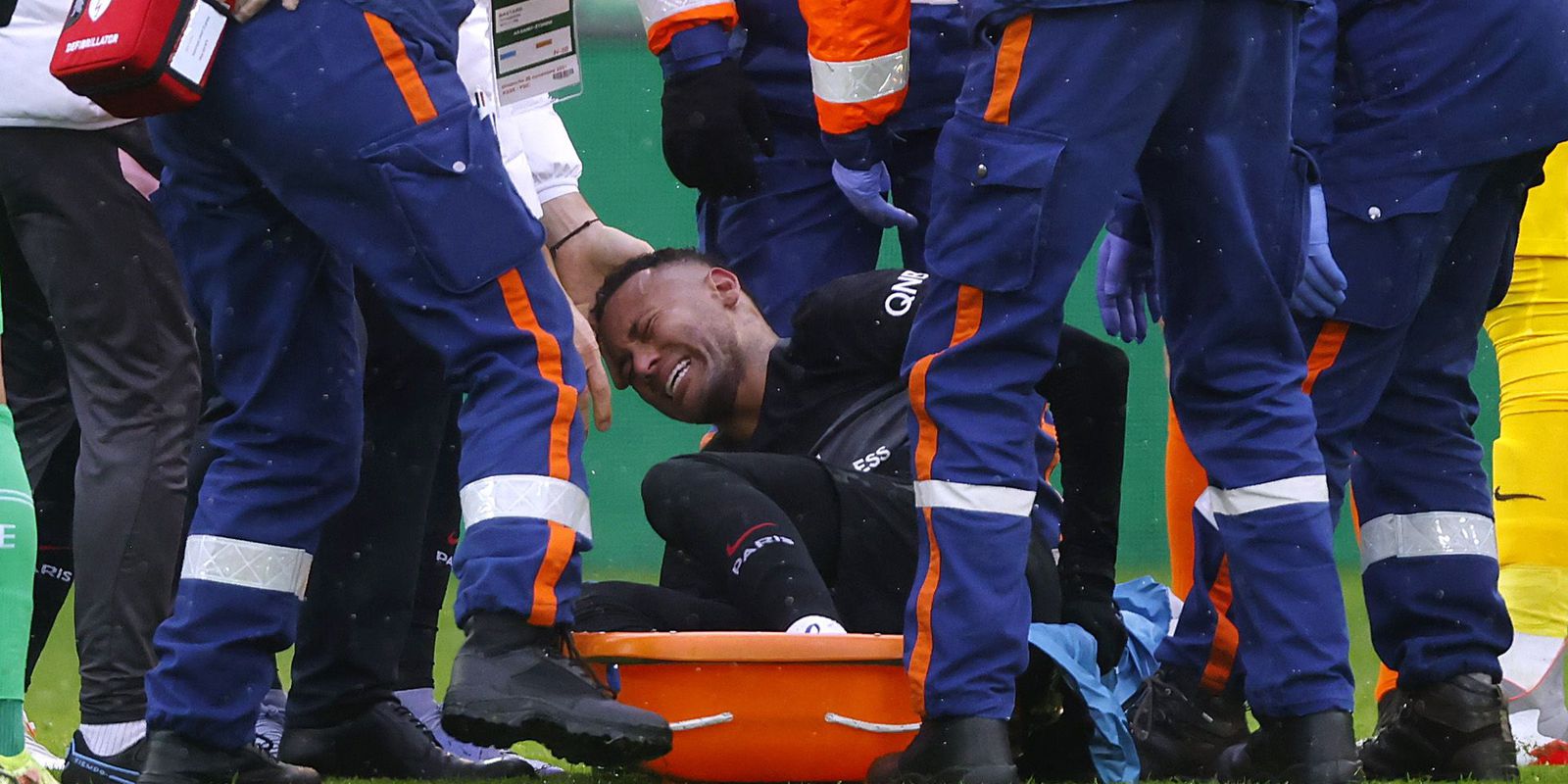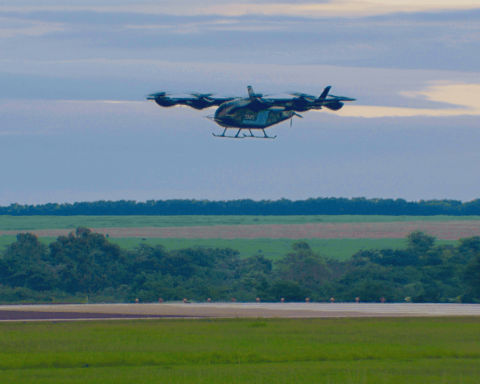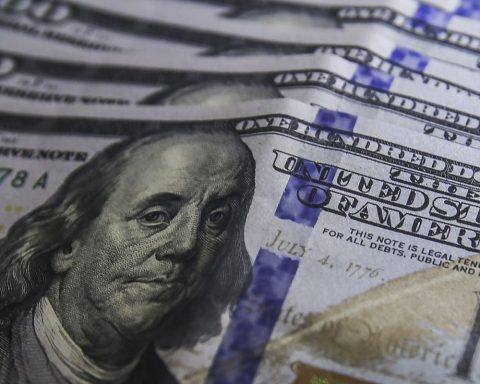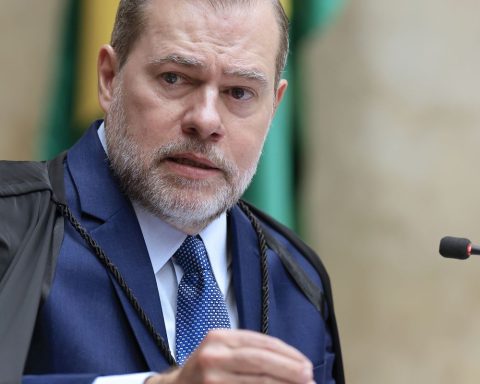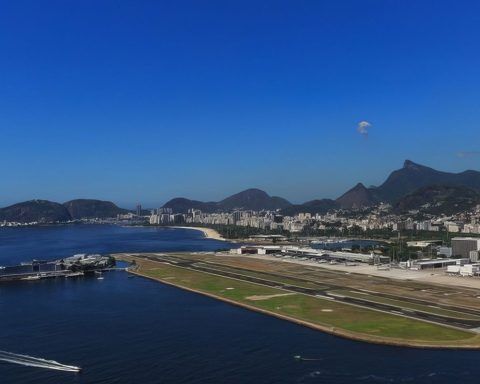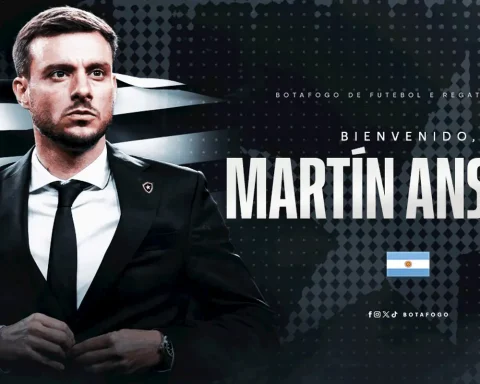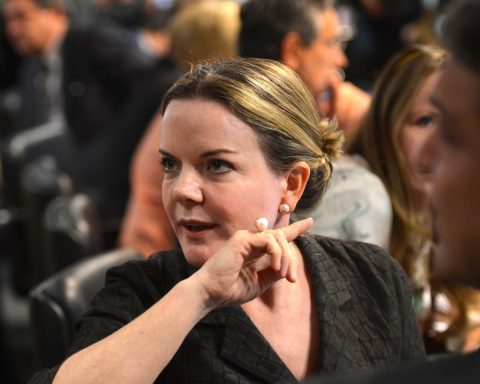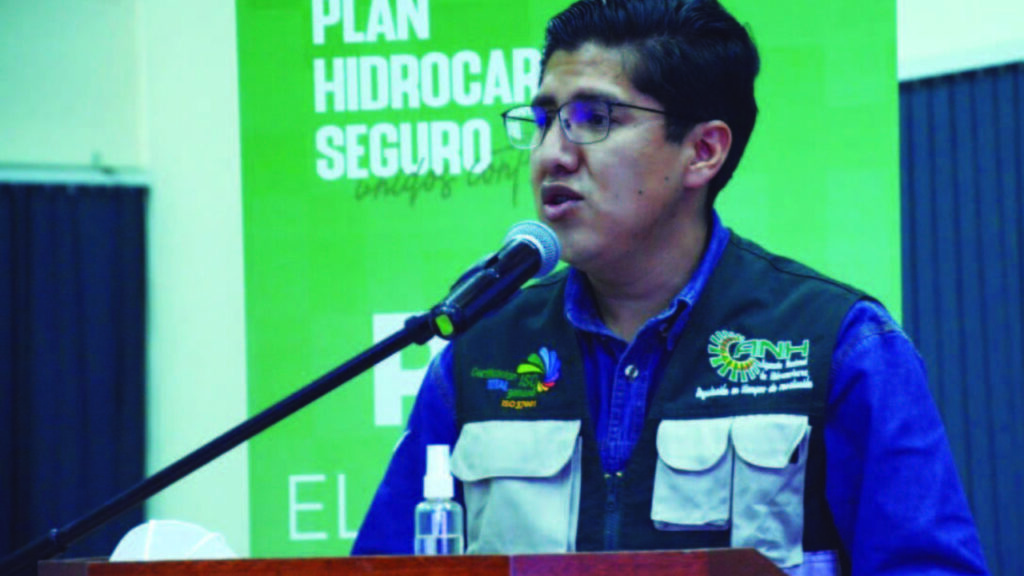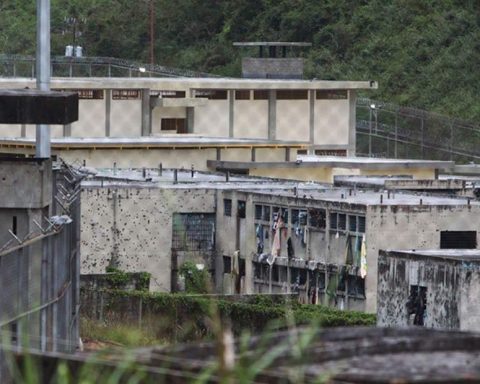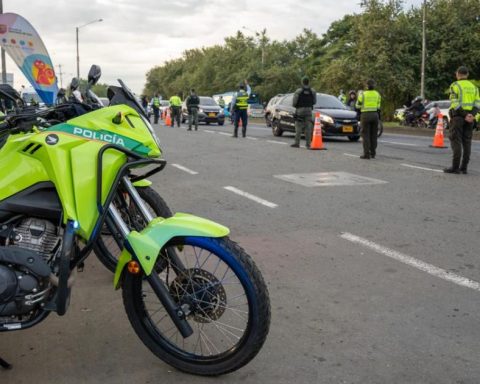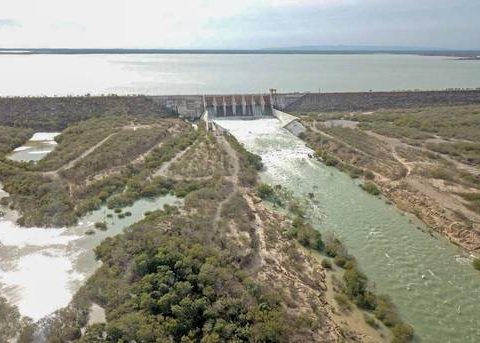We are in the year of the World Cup. This time, however, the most awaited tournament in the world of football will take a while to start. Due to the high temperatures in the middle of the year in Qatar, the host country of the event in 2022, the Cup will start at the end of November. But that doesn’t take away the fear of one of the great ghosts that haunt players and fans: injuries.
In every World Cup, history repeats itself: big names in world football miss their teams due to injuries that occurred on the eve of the tournament. And no one is safe. Spaniard Di Stefano, Dutch Marco Van Basten and Frenchman Franck Ribéry are some of the great names in world football in their time who missed the chance to defend their country in a World Cup due to injuries.
Thigh injuries are more common
Brazil also frequently suffers from the problem. Players like Romário, Daniel Alves and Careca were injured on the eve of a World Cup and were cut. The most common injuries suffered by soccer players are in the thigh, more precisely in the posterior muscle. Injuries usually occur when the race is slowing down. The anterior musculature of the thigh is also another that suffers a lot of injuries.
“The hamstrings, or quadriceps, are most injured during kicking or in the acceleration phase for running. They are also frequently injured in soccer players, but to a lesser extent. [em comparação com os músculos posteriores]”, explains Bruno de Melo e Silva, specialist in sports physiotherapy and physiotherapist for the United Arab Emirates national team.
Knee is the biggest villain
The most serious injury normally seen in football is in the knee, more precisely in the anterior cruciate ligament (ACL). “The anterior cruciate ligament injury is the most serious, as it leaves the athlete inactive for a long time. Usually it needs surgery and the turnaround time is around nine to 12 months”, says Bruno.
It was precisely an ACL injury that took right-back Daniel Alves out of the 2018 World Cup in Russia. Knee injuries also prevented right-back Leandro from playing in the 1986 World Cup in Mexico, and took Edmílson out of the 2006 World Cup in Germany.
The return of an athlete to the practice of sport goes beyond healing an injury. The downtime causes loss of physical conditioning and the period for this recovery should also be considered in preparation for returning to the pitch. Bruno Melo e Silva also highlights the psychological part, as the athlete is often afraid of suffering a new injury and this makes his return difficult.
“During the rehabilitation period, the physical therapist must work the muscular part, muscles not involved in the injury, and the cardiorespiratory part, to try to keep the athlete’s physical conditioning at a minimum. For the return to sport, in high performance, the athlete who has had a muscle injury can take around one to two weeks to reach their peak conditioning again.”
2022 calendar as an ally
World Cups usually take place in the middle of the year, with players coming from an entire season played in Europe. Unlike the Brazilian football calendar, the main tournaments of the European season start in August and end in May of the following year. As a result, several players, including those from the Brazilian National Team, most of whom play for European teams, arrive at the Cup physically worn out after several months of uninterrupted games and training.
But the 2022 World Cup brings an unusual scenario. With its start scheduled for November 21, the European season will be interrupted halfway through. For the physiotherapist of the UAE national team, this can be a positive factor in preventing injuries. “Theoretically, the trend is for players to arrive more intact for this Cup. But we can’t say, because this is the first time this has happened.”
Brazilian Team
Considering the last squad calls, everything indicates that coach Tite has most of the names already defined. On this list, some players have a history of injuries, but few athletes have had physical problems in recent months. And almost all are in full swing.
The exception is Antony, but he could benefit from the Qatar Cup calendar. The Ajax striker is recovering from an ankle injury suffered in the last game of the national team, for the World Cup qualifiers, against Bolivia. The expectation is for a recovery until May.
Recent history of shirt 10
The year 2021 for Neymar was not the best. An ankle injury after a violent entry by an opponent, still in December 2020, took him off the pitch for almost a month. Upon his return, he suffered another injury. This time, on the thigh, after another entry by an opponent. Thigh pain also affected the Brazilian striker in October and November last year. Finally, an ankle ligament injury suffered at the end of November left Neymar out for about two months (featured photo).
The main name of the Selection is not usually lucky in years of World Cup. In 2018, he suffered a fracture in a bone in his right foot and barely recovered in time to play in the Cup. In the previous World Cup, in Brazil, Neymar suffered a knee in the back in the match against Colombia, in the quarter-finals. The blow fractured a vertebra in the attacker’s lumbar and took him out of the rest of the Cup.
Right-back Danilo, from Juventus (Italy), suffered from many injuries during the 2018 World Cup. Now, he comes from a thigh injury, suffered in November last year and returned after two months out. Midfielder Philippe Coutinho, who returned to the squad after a long time away from the national team, suffered a serious knee injury at the end of 2020, when he was still playing for Barcelona, and was out of action for about seven months.
Selection cuts in cups
In all of the following cases, Brazil lost important, sometimes crucial, players on the eve of a World Cup. Check out some of the injury cuts that left Brazil missing in World Cups:
Pele (1962): It would be the Cup of Pele’s affirmation as the great player that the world already knew he was after the 1958 World Cup. He scored a goal in the victory over Mexico, in his debut, but the following match was his last in that Cup. A thigh strain, still in the first half against Czechoslovakia, defeated Pele. In the absence of the King, Garrincha’s star shone. With Anjo das Pernas Tortas, flanked by Didi, Zagallo, Vavá and Amarildo, who replaced Pelé, Brazil was two-time world champion.
Clodoaldo (1974): Owner of one of the greatest teams the world has ever seen, Brazil in 1970, Clodoaldo was the right name for the 1974 World Cup. The midfielder ended up suffering a thigh strain and was cut by Zagallo, coach at the time. Striker Mirandinha was called up to replace him, but his spot as a defensive midfielder was filled by the improvised defender Piazza. Brazil finished fourth in that world championship, losing the third-place dispute to Poland.
bald (1982): At the time at Guarani, the striker suffered a thigh strain and the national team’s medical department understood that there was not enough time for Careca to recover. Roberto Dinamite, from Vasco, was called up in his place.
Leandro and Cerezo (1986): The Flamengo right-back injured his knee on the eve of the national team’s departure to Mexico. The delegation only discovered the injury on the day of boarding, when the player did not show up. According to Elzo, midfielder of that team, midfielder Zico and coach Telê Santana went to Leandro’s house and found him with a swollen knee. In his place, Josimar was summoned. Toninho Cerezo suffered a thigh muscle injury months earlier. He spent three months in treatment and believed he would recover in time. Even so, the cut was confirmed. Fifteen days after the cut, the midfielder was on the field for Roma, in the Coppa Italia final.
Mozer and Ricardo Gomes (1994): Shortly before the United States Cup, Brazil lost its likely starting defense duo. Mozer was discarded by the technical committee after medical examinations found a picture of toxic hepatitis, due to the use of drugs in excess. Annoyed, the defender of the 1990 Cup was cut. Ricardo Gomes, on the other hand, suffered a thigh injury in a friendly preparatory to the world championship and also left the group that shortly after would become world champion. Ricardo Rocha would become the holder of the defense, but he was injured in the first match. He wasn’t cut, but he didn’t play that Cup anymore. Tetra’s defense was Aldair and Márcio Santos.
Juninho Paulista (1998): Juninho had a great time at Atlético de Madrid in 1998. His name was taken for granted for the World Cup, but in February, in a match against Celta de Vigo, the Brazilian midfielder suffered a violent entry from an opponent, who broke your ankle. Juninho recovered before the doctors’ prediction, but the downtime took him off coach Zagallo’s radar and he was left off the list for the Cup.
Marcio Santos (1998): Tetra’s starting defender was the right name to play in the Coupe de France. The defender suffered a thigh injury in the final of the Campeonato Paulista, between São Paulo and Corinthians, but was not worried. Days later, he presented himself to the national team and stated that he would recover in time. But it was not enough to convince the team doctor at the time, Lídio Toledo. He cut the defender, who would enter the field for São Paulo, already recovered, less than a week later.
Romario (1998): The best player of the last World Cup would team up with the best player in the world in 1997. There was not a single Brazilian who doubted the world title in the 1998 World Cup, with an attack formed by Romário and Ronaldo. If in 1994 we had been champions, with the newest star in world football joining that team, the title seemed right. But a few days before the debut and already in France, Romario suffered a calf injury and was cut. The striker did not agree with the cut and stated that he would recover in time to play the decisive matches, but there was no way. Without Romario and with an apathetic Ronaldo, after suffering a seizure the night before, Brazil lost the final to the hosts by 3-0.
Emerson (2002): Romário’s replacement in 1998 ended up living the other side of the same coin in the following World Cup. The midfielder Emerson, who did little in 1998, would become one of the pillars of the Selection four years later. But days before the Cup debut, Emerson suffered a shoulder injury when he played goalkeeper in a “rachão” (recreational match) after training. The injury took away his chance to lift the cup, as he was captain of that team. Midfielder Ricardinho took his place.
Edmilson (2006): One of the defensive highlights of Brazil’s five-time champion in 2006, Edmílson would once again wear Amarelinha in the German Cup. In the final stretch of preparation for the world championship, the Brazilian steering wheel felt a knee injury. Tests confirmed a torn meniscus in his right knee and he was cut from the national team. The also midfielder Mineiro took his place.
Daniel Alves (2018): With the end of the Cafu Era on the right-back of the Brazilian National Team, the vacancy in the position started to be disputed by Maicon and Daniel Alves. In the 2010 Cup, Maicon was the starter, with Daniel in the reserve. In 2014, the tables were turned, but Daniel ended up losing the position to Maicon in the quarter-finals. In 2018, however, he was sovereign in the position and considered one of the leaders of the locker room. But a knee injury during a match for his team at the time, Paris Saint-Germain, from France, ruled him out of the Cup. Fágner, from Corinthians, took his place and ended up playing several matches in the Russian Cup. That’s because the natural heir to the position, Danilo, was also injured during the competition.
